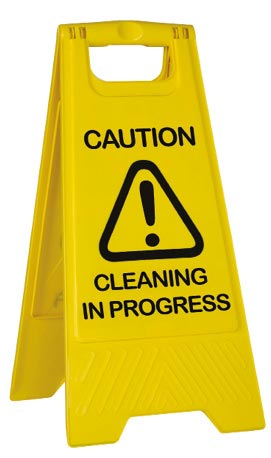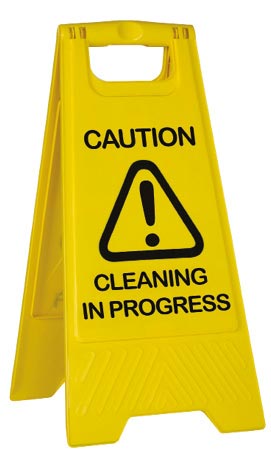Health and safety is everyone’s responsibility
Providing and maintaining a safe working environment in all sectors is challenging, none more so than within the facilities management sector, as so many different elements have to be taken into consideration. Each party, employers and employees alike, has responsibilities to ensure the working environment is safe for all
Health and safety may have an undeserved reputation as an area of little strategic importance within the larger business setting; however its correct implementation is paramount to ultimate success. If procedures are not followed correctly and an accident occurs it becomes the central focus of all. It is therefore so much better to have in place a robust health and safety regime that covers every aspect of the working environment.
By following a few dos and don’ts a business can ensure its employees are working in a safe environment and accidents are avoided.
TAKE TIME TO BE SAFE
Make sure you know what you’re doing. It may sound too basic to mention but it’s the first rule of health and safety. Depending on the work task, from safe handling of chemicals to working at heights, there will be a number of different things to consider. Each task will require risk assessments, employees may have to wear personal protective equipment (PPE) and specific training may be required. Understanding the risks is the first step to avoiding them.
“Accidents in the workplace don’t just happen; there’s always a reason,” explained George Nelson, head of facilities management and services at Clugston FM. “For example, there may be a lack of safety management, planning and control, dangerous plant or equipment or a lack of training.
“By carrying out a thorough risk assessment you can identify the risks and then put a safe working plan in place. This will be more effective if its aims are realistic and achievable and everyone understands its importance.”
ALWAYS WORK TO YOUR RISK ASSESSMENTS AND REPORT ANY ACCIDENTS
Once a risk assessment has been completed it’s important that it’s implemented correctly. Adequate training should be given to employees regarding their role and the risks involved and they should receive instruction and guidance to enable them to complete the job safely.
 Accidents should always be reported and investigated thoroughly. It is only by having a clear overview of the hazards that a safer working environment can be created.
Accidents should always be reported and investigated thoroughly. It is only by having a clear overview of the hazards that a safer working environment can be created.
“By reporting and investigating all accidents we can identify the cause or contributing factors and avoid recurrence,” explained Nelson. “If there is an accident the health and safety precautions have fallen short in some way. It is imperative that lessons are learned and the results of investigations are communicated to the whole team. However, it’s not just accidents that should be reported, near misses can also alert us to potential hazards.”
PERSONAL PROTECTIVE EQUIPMENT IS IMPORTANT
If the risks of a specific job cannot be controlled in any other way, such as limiting the noise emitted by a machine, then PPE must be provided and worn. There are many different types of PPE depending on the task, such as safety visors to protect the full face from chemical splashes and safety goggles to prevent dust, vapours or gases entering the eyes. Respiratory protection, ear plugs or muffs, gloves and over-clothing all have a specific purpose and should be worn correctly.
“PPE needs to be maintained properly and it should fit the individual correctly. Whether it’s a helmet to protect your head or steel capped safety boots to protect your feet or anything else in-between PPE is there for protection, giving you the last line in defence,” said Nelson.
ELECTRICITY CAN KILL
It’s everyone’s responsibility that electrical installations and equipment are used safely. Although an everyday power source, often taken for granted, electricity is still a potential killer with it posing danger through shock, burns, fires and explosions.
“There are some common electrical hazards to look out for, many of them simple to spot, but also easy to overlook. Damaged equipment, such as cables and sockets, should be reported and replaced. Watch out for non-standard repairs, including taped joins and the tell-tale signs of burn marks or scorching that indicate appliances may be overheating,” added Nelson.
“Of course, all electrical appliances should be checked annually and a log of all equipment kept up-to-date.”
MINIMISE FIRE RISK
In any facility there is the potential for fire, minimising the risks is essential. Keep areas clean and tidy, dispose of waste regularly and keep flammable material in a proper storage cabinet and large quantities in a ‘flammable’ fire resisting cabinet.
In addition to these general guidelines consideration should also be given to the use and storage of potentially hazardous items, such as compressed gas cylinders. These should always be kept in a safe condition.
“There are several dos and don’ts with gas cylinders. They should always be kept upright and in a secure storage area with the correct warning signs displayed. Different types of gas cylinders, such as fuel gas and oxygen, should be segregated. Failure to handle gas cylinders correctly can have disastrous consequences for both people and property,” Nelson warned.
By understanding health and safety requirements, conducting a thorough risk assessment and implementing correct procedures a safe working environment can be provided for all.
The post Health and safety is everyone’s responsibility appeared first on FMJ.
Source: FMJ


